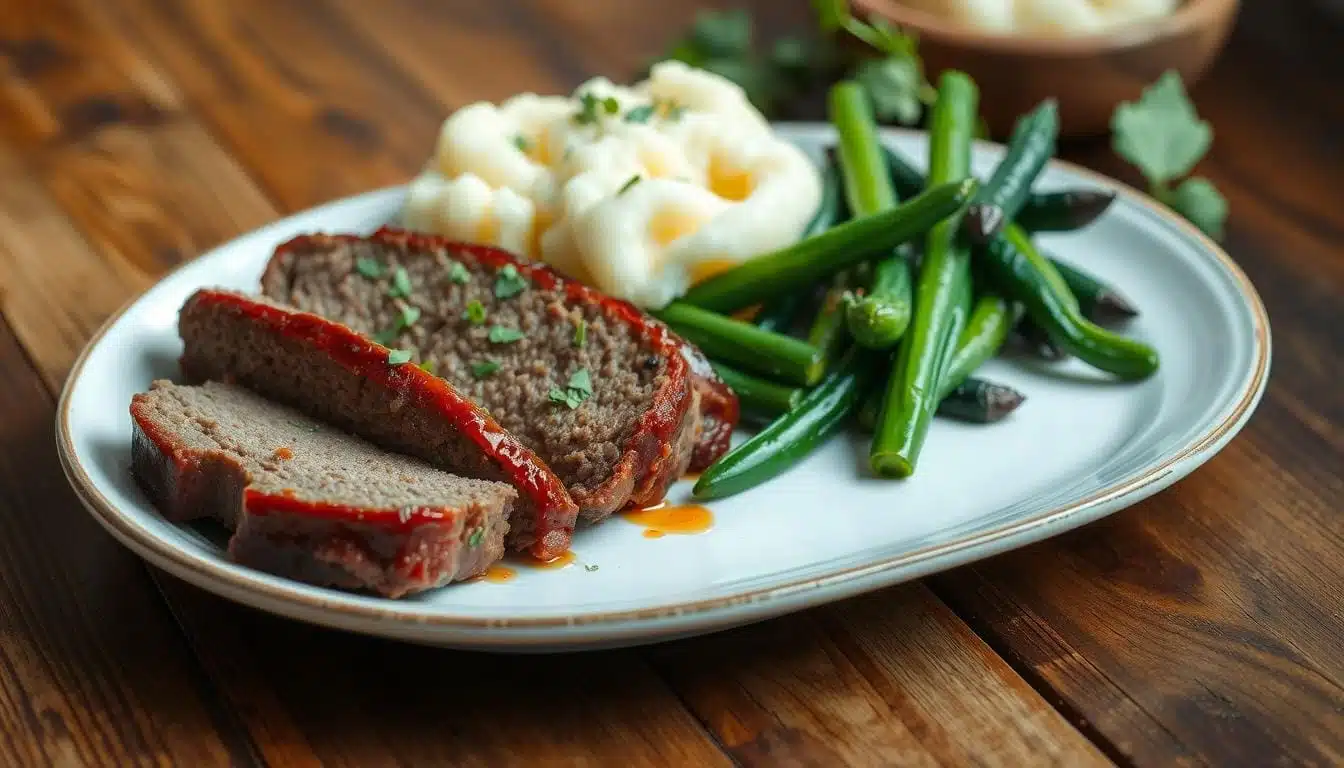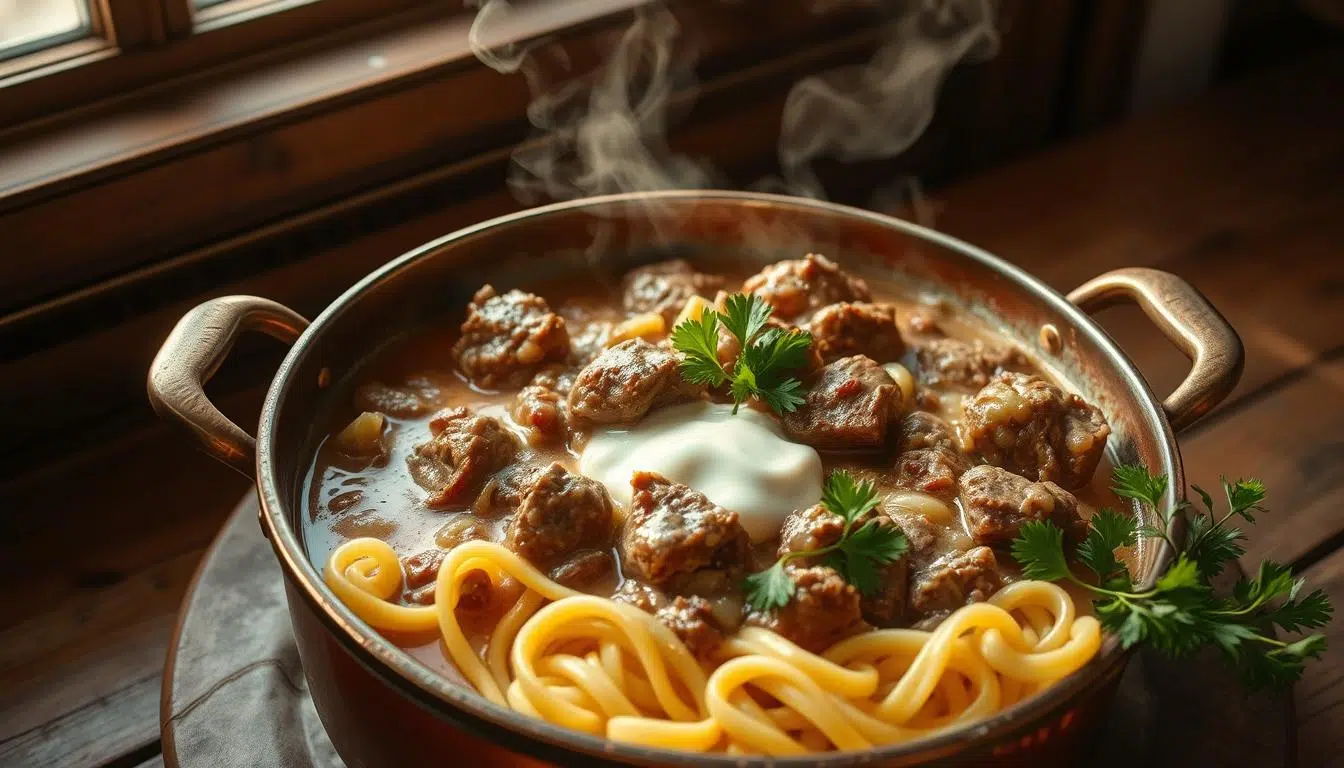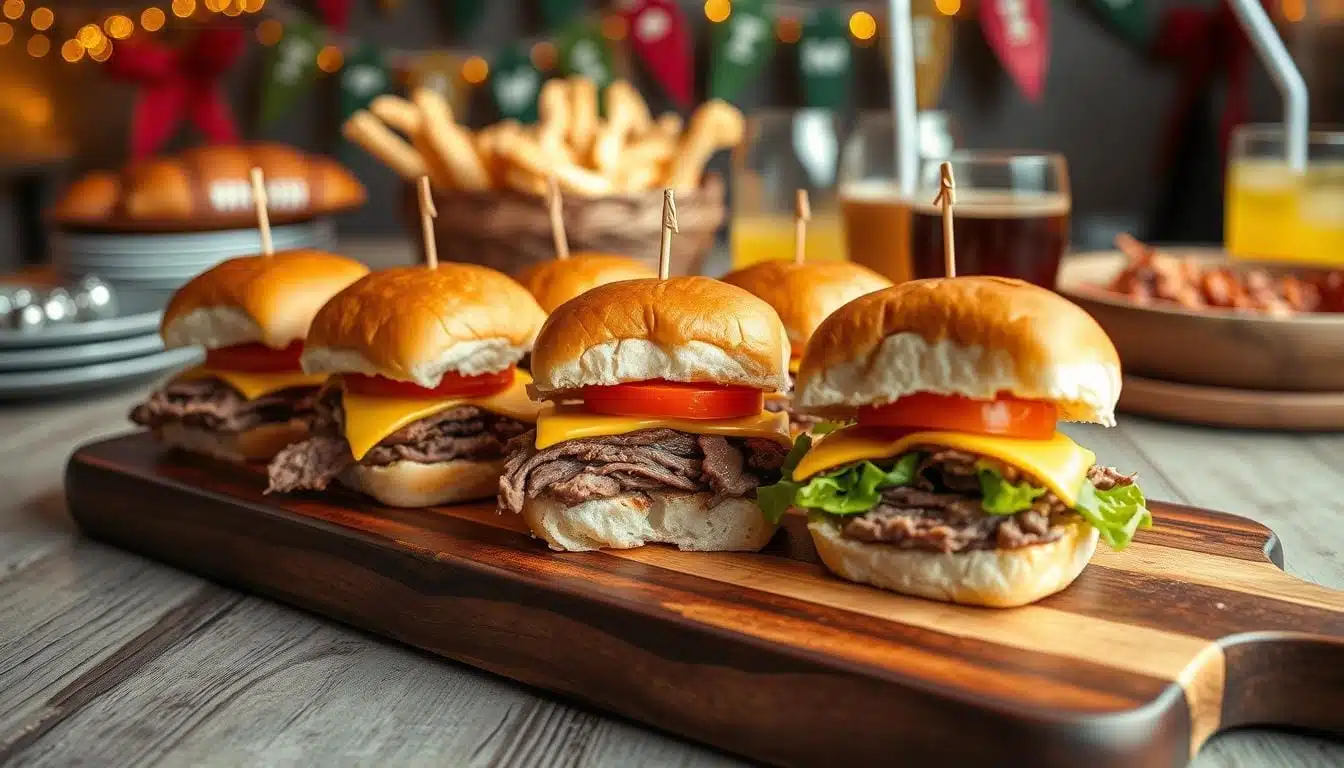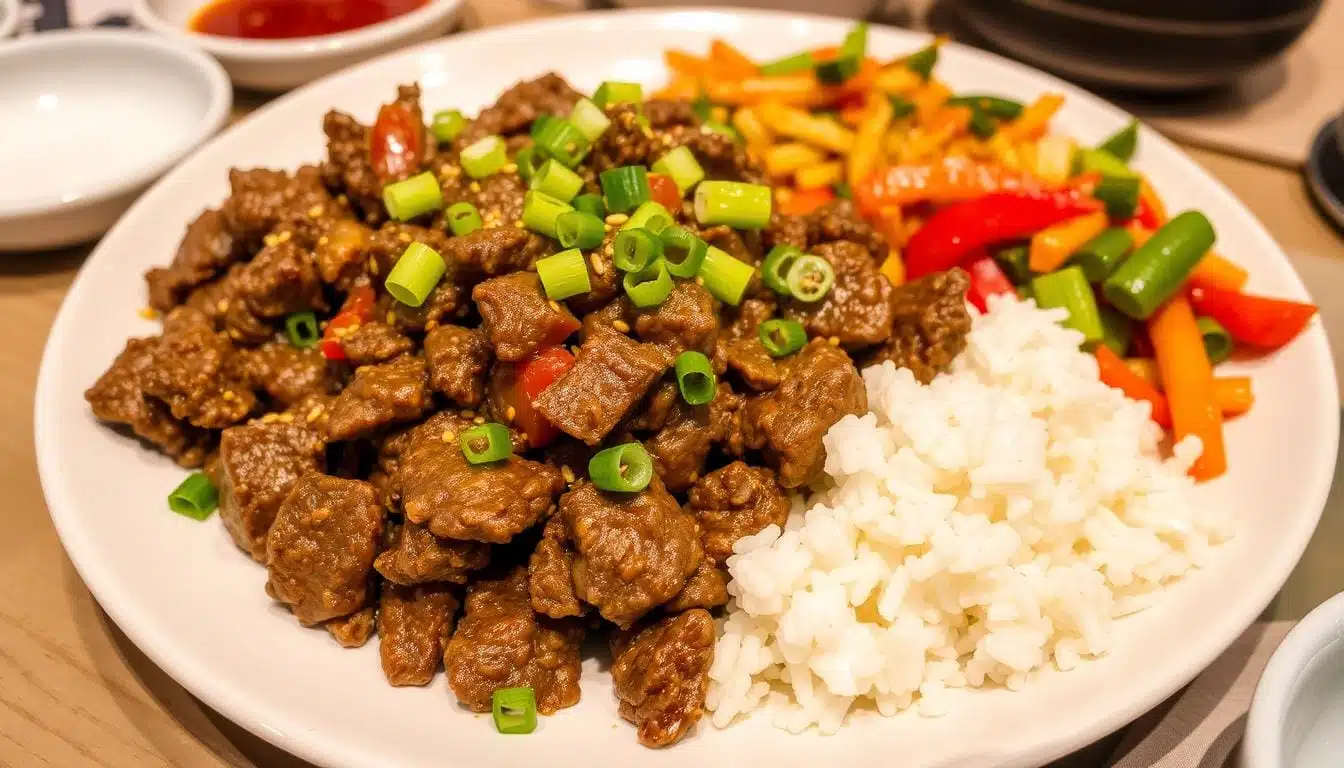Find Local Grass Fed Beef Near Me | Fresh & Natural
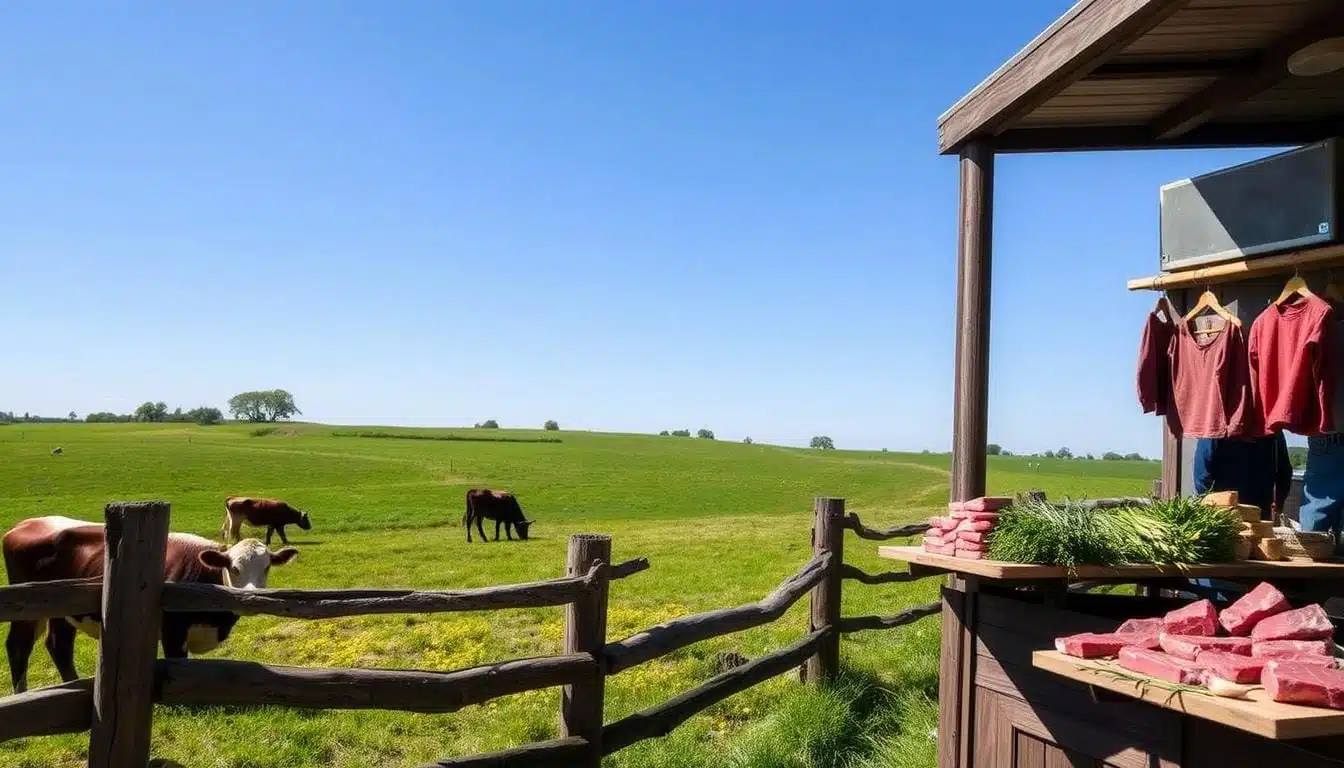
In today’s world, people want fresh, local, and sustainable beef. They look for grass-fed beef because it’s good for their health and the planet. But, how do you find real, local grass-fed beef?
Finding the best grass-fed beef suppliers starts with knowing its benefits. Grass-fed beef is better for you and the environment. It’s a top choice for families in the U.S. who care about their health and the planet.
Table of Contents
Benefits of Choosing Grass Fed Beef for Your Family
Choosing the right beef for your family is important. Grass-fed beef, like the hormone-free kind from local farms, has many benefits. It’s better for you and the planet.
Nutritional Advantages of Grass-Fed vs. Grain-Fed Beef
Grass-fed beef has more omega-3s, antioxidants, and vitamins than grain-fed beef. It has up to five times more omega-3s and up to twice the amount of CLA. CLA is a healthy fat that may fight inflammation and cancer.
Environmental Impact and Sustainability
Grass-fed beef producers focus on sustainable farming. Their cattle graze on pastures, which helps the environment. This is different from grain-fed farming, which is harder on the planet.
Health Benefits for Consumers
Grass-fed beef is good for your health too. It has more vitamins A and E and antioxidants. It also has fewer hormones and antibiotics, making it a healthier choice.
“Grass-fed beef is not only better for the environment, but it’s also a healthier choice for my family. The superior nutritional profile and the peace of mind that comes with supporting local, sustainable agriculture make it the clear choice for us.”
By choosing grass-finished beef, families get a healthier and greener protein option.
Understanding What “Grass Fed Beef Near Me” Really Means
When you look for “grass-fed cattle farms close to me” or “pasture-raised beef suppliers,” it’s key to know what “grass-fed beef” really is. This term is getting more popular, but its meaning can differ. To get the real, high-quality grass-fed beef you want, learning about labeling and terms is important.
Grass-fed beef comes from cows eating grass and other plants, not grains. This diet makes the beef leaner, richer in nutrients, and lower in bad fats than grain-fed beef.
- Grass-fed cattle roam freely on open pastures, eating what’s natural for them.
- Pasture-raised beef comes from cows that mostly eat grass, not being in feedlots.
- “Grass-finished” means cows ate only grass, no grains, their whole lives.
Knowing these details helps you choose better when looking for local grass-fed beef. You’ll get the quality and benefits you’re after.
“Choosing grass-fed beef is not just about the taste – it’s about supporting a more sustainable and ethical food system that prioritizes animal welfare and environmental stewardship.”
Local Grass-Fed Beef Farms: Direct from Source to Table
Getting the freshest grass-fed beef directly from local farms is rewarding. You get top-quality beef and connect with local producers. This way, you support your community and enjoy great food.
What to Ask Your Local Farmer
When looking for local grass-fed beef, ask the farmers these questions:
- What breed of cattle do you raise?
- How are your animals raised and cared for?
- Do you use any hormones, antibiotics, or other additives?
- Can you provide details on your grass-fed and finishing practices?
- What cuts of beef do you offer, and how are they priced?
Seasonal Availability and Buying Options
Local grass-fed beef availability changes with the seasons. Some farms offer beef all year, while others have specific times. Ask about the best times to buy and any special deals.
Building Relationships with Local Producers
Connecting with your local beef farmer is great. You learn about their farming and care for animals. You also help shape your local food system. Supporting these farmers benefits your health, the environment, and your community.
How to Verify Authentic Grass-Finished Beef Certification
When buying grass-finished beef or non-gmo grass-fed beef options, it’s key to check if claims are true. Knowing how to verify certification helps you make smart choices. It also supports farming that’s good for the planet and animals.
Look for trusted certification labels when you buy grass-finished beef. Some top certifications are:
- American Grassfed Association (AGA) certification, which means the beef comes from animals raised on pasture. It’s raised without antibiotics or hormones.
- USDA Certified Organic label, showing the beef is made without synthetic fertilizers, pesticides, or GMOs.
- Certified Humane certification, which means the animals were raised with care. They had access to pasture or range.
You can also talk to local grass-finished beef producers or farms. Asking them about their certification and practices can give you insight. It shows how much care they put into raising animals and taking care of the land.
“Transparency and accountability are crucial when it comes to ensuring the integrity of grass-finished beef claims. Verifying certifications and engaging with local producers can help consumers make ethical, informed choices.”
By learning about certification and choosing non-gmo grass-fed beef options from honest producers, you can trust the quality of your grass-finished beef. It’s a way to support sustainable and ethical farming.
Guide to Purchasing Bulk Grass Fed Beef Shares
Buying grass-fed beef in bulk is a smart way to save money and get quality meat. You can choose from a quarter, half, or whole cow. Knowing the process and what to consider will help you make a great choice.
Quarter, Half, and Whole Cow Options
You have three main options: a quarter, half, or whole cow. A quarter cow gives you 100-125 pounds of meat. A half cow offers 300-350 pounds, and a whole cow gives 600-700 pounds. Think about your family’s needs, freezer space, and how much meat you’ll use to pick the right size.
Storage Requirements and Freezer Space
Storing bulk grass-fed beef right is key. Make sure you have enough freezer space. A quarter cow needs 4-5 cubic feet, a half cow 8-10 cubic feet, and a whole cow 16-20 cubic feet. Adjust your freezer to keep your beef fresh and tasty.
Cost Comparison and Value Analysis
Buying in bulk saves you money compared to buying from stores or online. Working with a sustainable beef ranches nearby can cut costs by 15-25% per pound. It also supports your community and reduces carbon footprint by cutting down on transport costs. Compare prices to find the best deal for your budget and needs.
Buying bulk high-quality, grass fed beef near me can change your family’s health and support local food systems. Understanding the options, storage needs, and savings will help you choose wisely, fitting your values and budget.
Online Directories and Resources for Finding Local Beef Suppliers
In today’s world, finding fresh, grass-fed beef is easier than ever. Online resources like directories and community platforms help connect you with grass-fed cattle farms close to me and pasture-raised beef suppliers. These tools make it simple to get high-quality, sustainable beef from the source.
Online directories like Local Harvest are a great place to start. They let you search for grass-fed beef producers by zip code or city. You’ll find detailed farm profiles, including their practices, products, and availability. Plus, there are customer reviews to help you choose.
Platforms like FarmMatch and Eat Wild also connect you with local pasture-raised beef suppliers. These websites and apps let you buy grass-fed beef straight from farmers.
- Local Harvest: https://www.localharvest.org/
- FarmMatch: https://www.farmmatch.com/
- Eat Wild: https://www.eatwild.com/
Using these digital tools, you can find trusted grass-fed cattle farms close to me and pasture-raised beef suppliers. This way, you can get the freshest, most sustainable beef for your family.
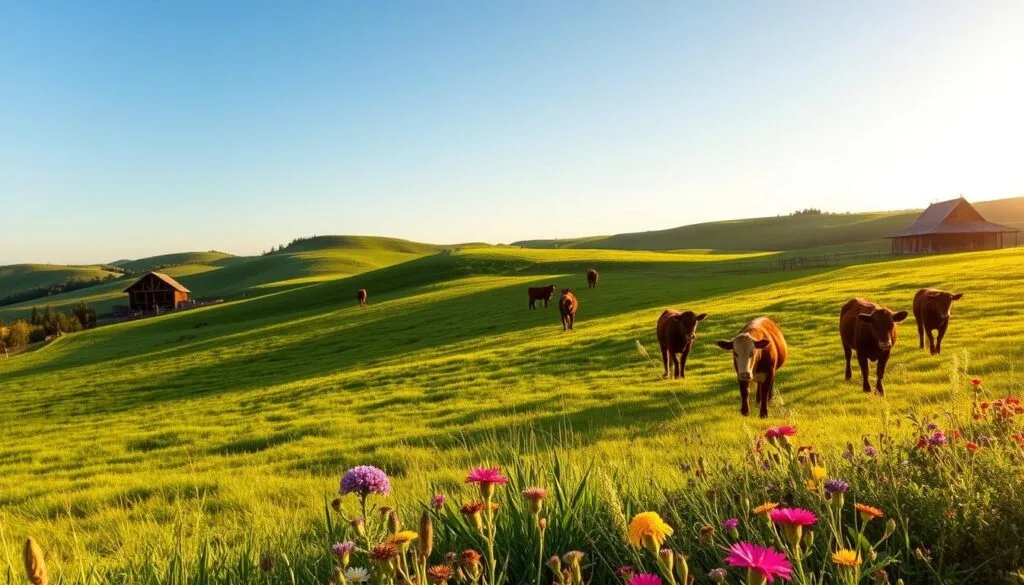
Understanding Pricing and Value of Local Grass Fed Beef
Many people wonder why organic grass-fed beef costs more. As it gains popularity, knowing its value is key. The higher price reflects the quality and care in its production.
Factors Affecting Grass Fed Beef Prices
Several factors affect the price of local grass-fed beef. Raising cattle on grass costs more than grain. Organic producers follow strict rules, needing more land and time.
Seasonal changes also play a role. Grass-fed cattle are slaughtered at different times. This leads to price changes and availability issues.
Cost-Saving Strategies for Buyers
- Building relationships with local producers can lead to better deals. Look for bulk or subscription options.
- Buying a quarter, half, or whole animal can save money. It’s cheaper than buying individual cuts.
- Grass-fed beef’s health benefits can make the cost worth it. Its nutritional value may be a long-term gain.
Understanding pricing and finding ways to save can help. This way, you can enjoy grass-fed beef without spending too much.
Tips for Storing and Preparing Your Grass Fed Beef
To enjoy the full taste and health perks of hormone-free, non-GMO grass-fed beef, you need to store and prepare it right. A few easy steps can help keep your premium grass-fed beef fresh and tasty from start to finish.
Freezing and Thawing for Maximum Freshness
Freezing your grass-fed beef correctly is key to keeping its quality. Wrap each cut tightly in freezer paper or airtight bags, removing as much air as possible to prevent freezer burn. When you’re ready to use it, thaw the beef in the fridge for 24-48 hours. This lets it slowly come to room temperature before cooking.
Cooking Techniques for Grass-Fed Beef
- Grass-fed beef is naturally leaner, so it’s best to cook it using moist heat methods like braising or slow-roasting to prevent dryness.
- Avoid overcooking by using a meat thermometer and pulling the beef off the heat slightly before it reaches your desired doneness.
- Let the beef rest for 5-10 minutes before slicing to allow the juices to redistribute throughout the meat.
Follow these simple tips to enjoy the full flavor and health benefits of your local, hormone-free grass-fed beef sources and non-GMO grass-fed beef options at home.
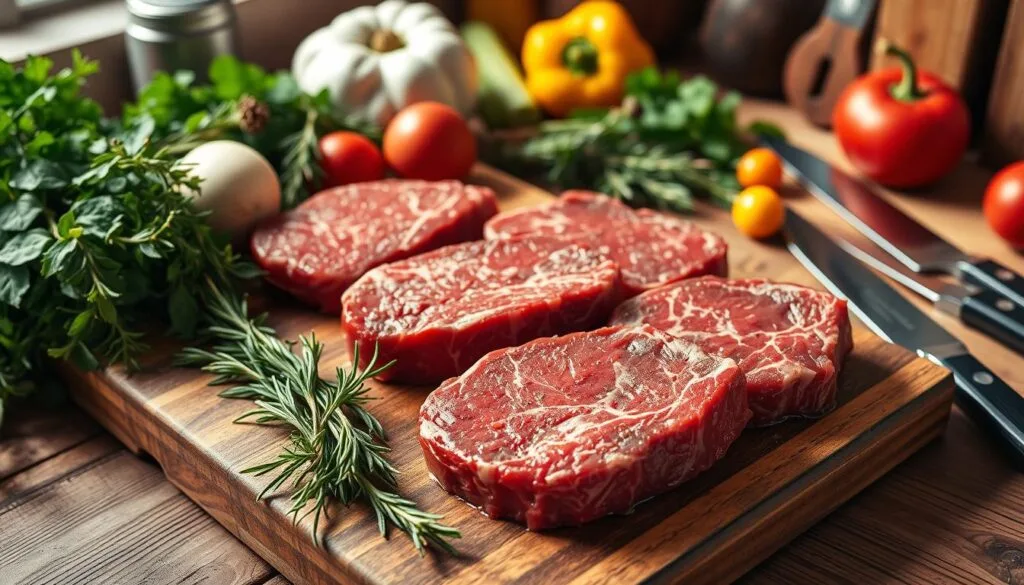
Conclusion
Finding grass fed beef near me can greatly benefit your health and the planet. By choosing local, sustainable beef ranches nearby, you get nutritious meat. You also help create a better food system.
Looking for local grass-fed beef farms might take some extra work. But the benefits are huge. Grass-fed beef is better for you and the environment, making it a top choice for a healthy lifestyle.
We suggest you look for local options and connect with grass fed beef producers. Enjoy the taste and health benefits of grass-fed meat. Your choices help you stay healthy and support sustainable farming.
